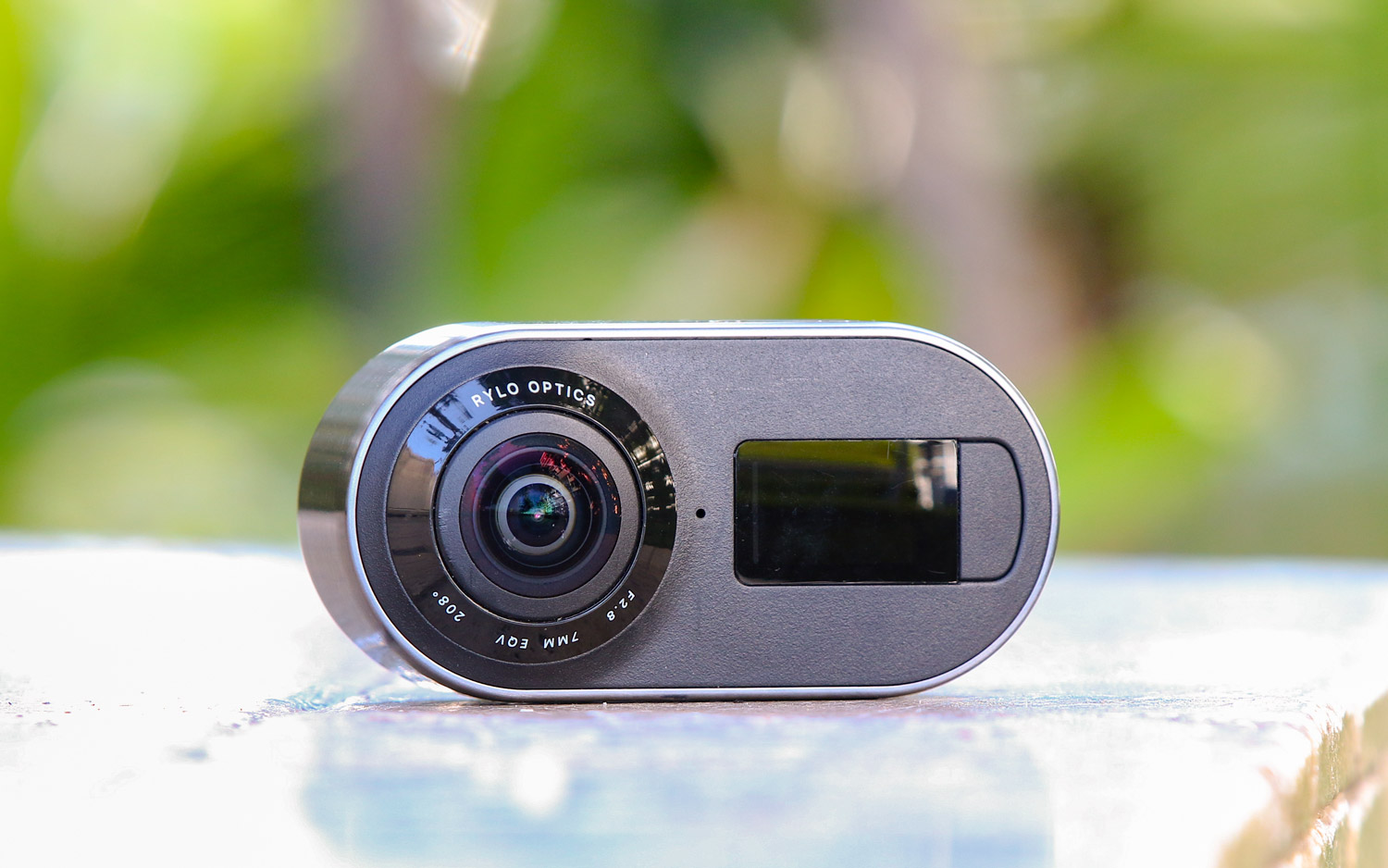Tom's Guide Verdict
Functional and easy to use, the Rylo 360 is an ideal choice for people looking to step up from a GoPro to capture 360-degree action sports.
Pros
- +
Intuitive 360 functions for action sports
- +
Pocketable design
- +
Easy-to-use app connect wirelessly or via cable
- +
Everyday Mount included connects to GoPro and Tripod mounts
- +
Image Stabilization is built-in
Cons
- -
Pricey
- -
Poor quality video in low-light conditions.
Why you can trust Tom's Guide
The Rylo 360 camera offers a natural upgrade for those looking to expand their view during most adrenaline-inducing activities. A small, portable and easily pocketable camera, the Rylo 360 benefits from a straightforward design, easy-to-use app and very few settings you'll need to change. It excels at processing action video, offering users the ability to be the director of their footage after the fact by changing views and follow focus. With its waterproof housing, Rylo adds the ability to use the camera in virtually any environment, no matter the conditions. It's our favorite 360 camera for action sports; for all of our picks, be sure to check out our best 360 cameras page.
Design
The Rylo 360 camera resembles a slightly larger relative of the Insta360, with a different orientation of its dual lenses and a more premium feel. Both outward-facing surfaces are matte black plastic. There is a continuous piece of lightly brushed aluminum that circles around the top, bottom and sides of the camera, giving it that sturdy feel. The Rylo is about the size of a D-battery, though it looks nothing like one.
Both Rylo 360 faces feature identical cameras, located opposite each other, as if you could almost look through one and see what is on the other side. This is unlike the design of both the Insta360 One and the Holo360, which use slightly offset camera placement. Additionally, both the top and bottom of the Rylo have a flat surface so it will easily stay put on a table, while the Insta360 is rounded on top and bottom and rolls onto the lens when set down. I prefer the Rylo's design to the Insta360.
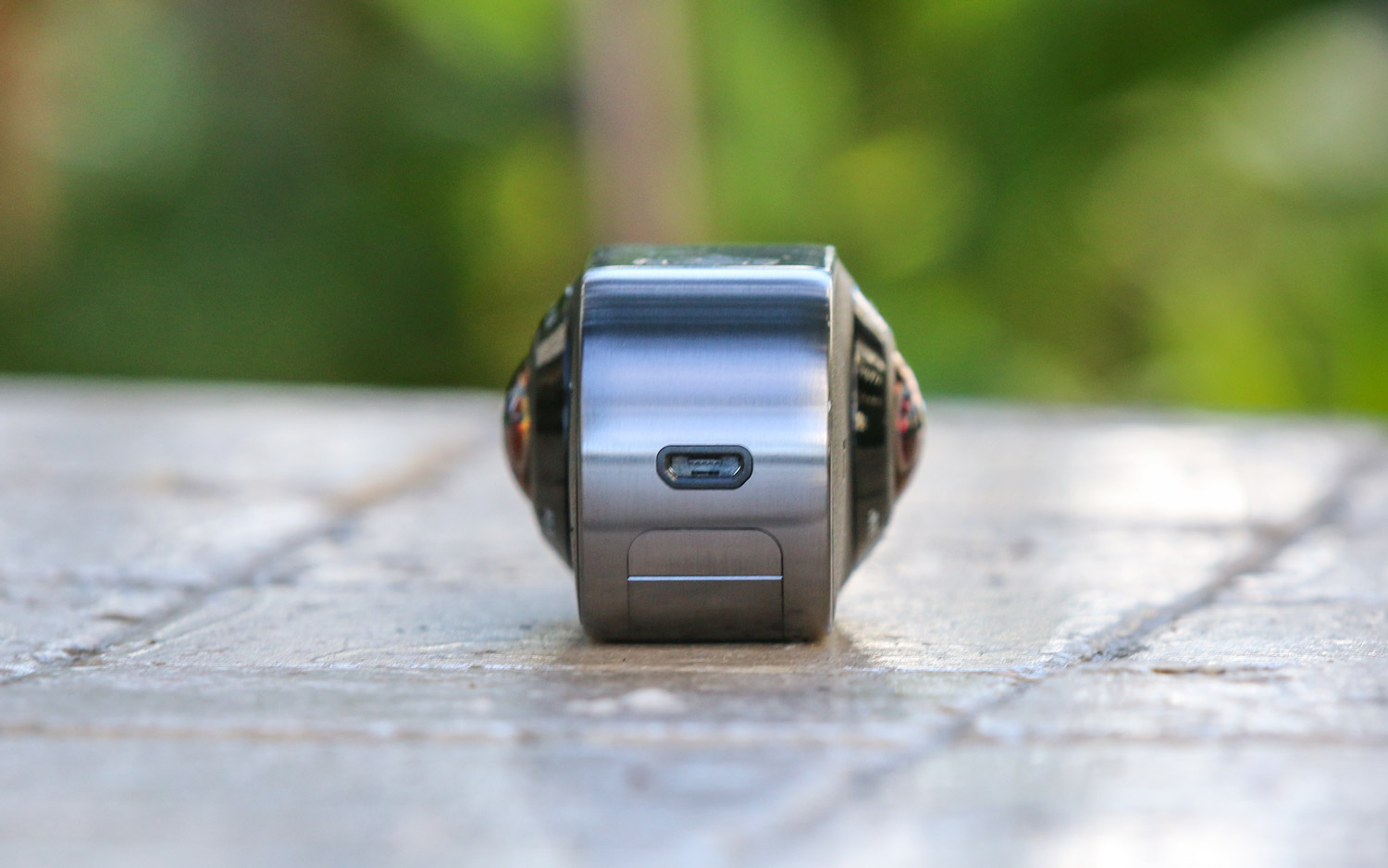
On one face is the camera lens, with the Rylo logo is embossed alongside in the black plastic. The opposing side has an identical camera lens, with a small single-color display showing users which of its three modes is selected as well as the current battery level. Depending on whether in photo or video mode, an indicator will show you how much space is left on the microSD card. In video mode, that figure is displayed in minutes, while photo mode will show pictures remaining.
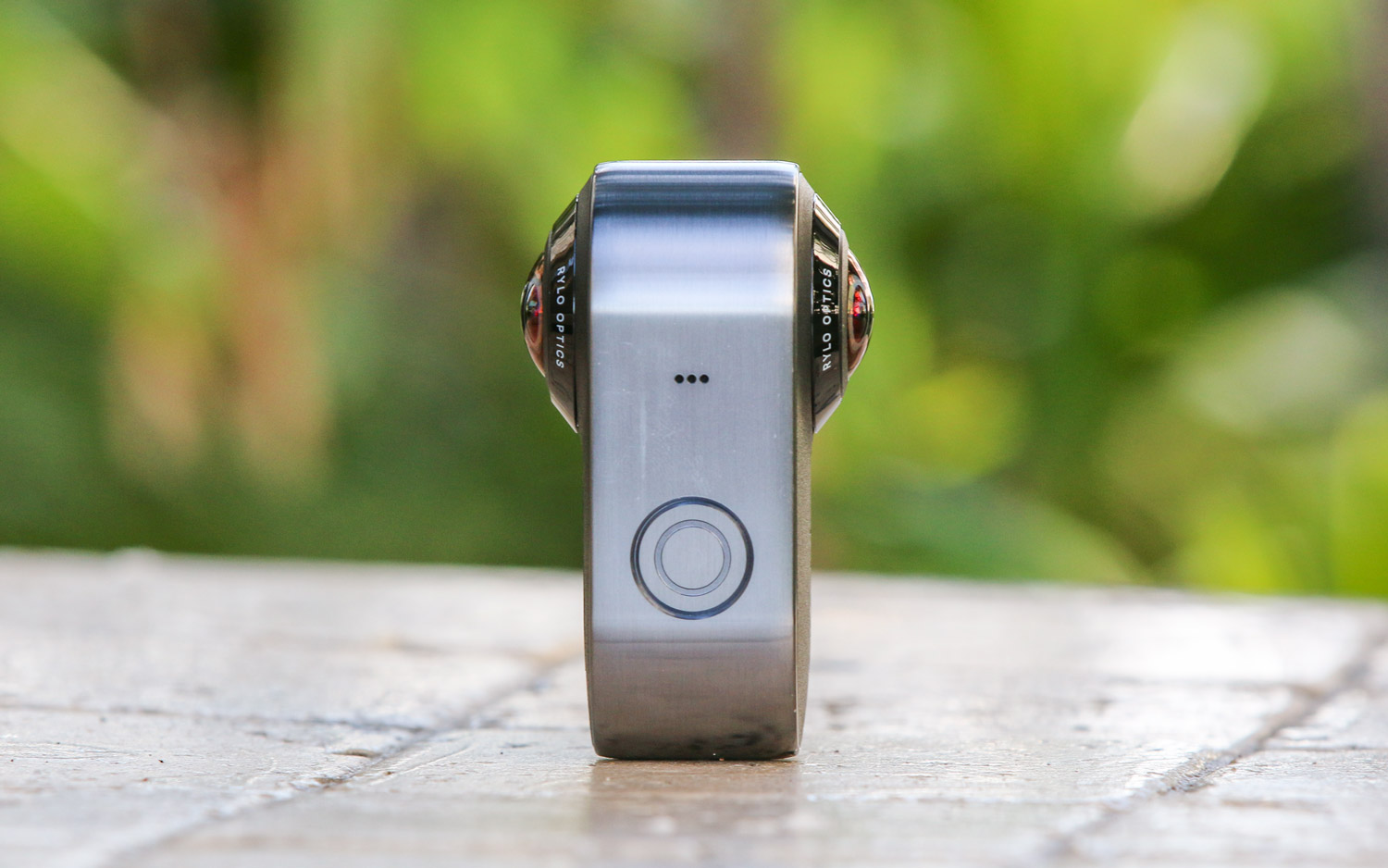
On the top of the camera is the dual-function shutter release/on-off button, which has no differentiation in height but features two circular etched rings that still makes it relatively easy to find the shutter button. There is a speaker on the top as well, noticeable by the three small holes. On the bottom of the camera is a spring-loaded battery door, inside which there's a slot for a microSD card. Charging the camera is done through the micro USB port on the side of the unit.
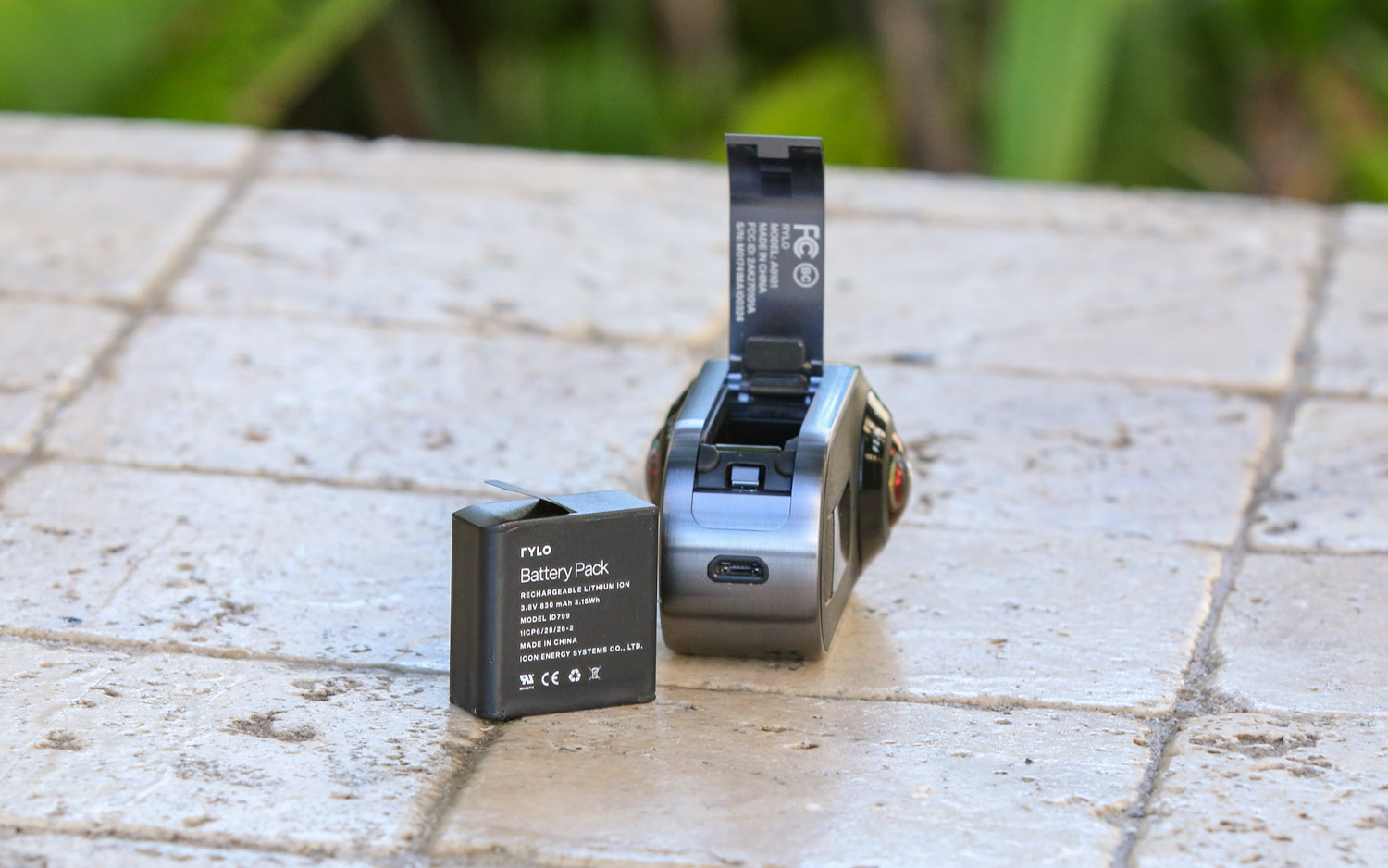
The Rylo 360 comes with the "Everyday Case," a plastic frame with a GoPro mount on the bottom and a short, removable handle that has a tripod-screw mount underneath the removable base cap. There are only a few accessories listed on Rylo's website, including the optional $69 Adventure Case. which makes the camera fully waterproof to 10 feet.
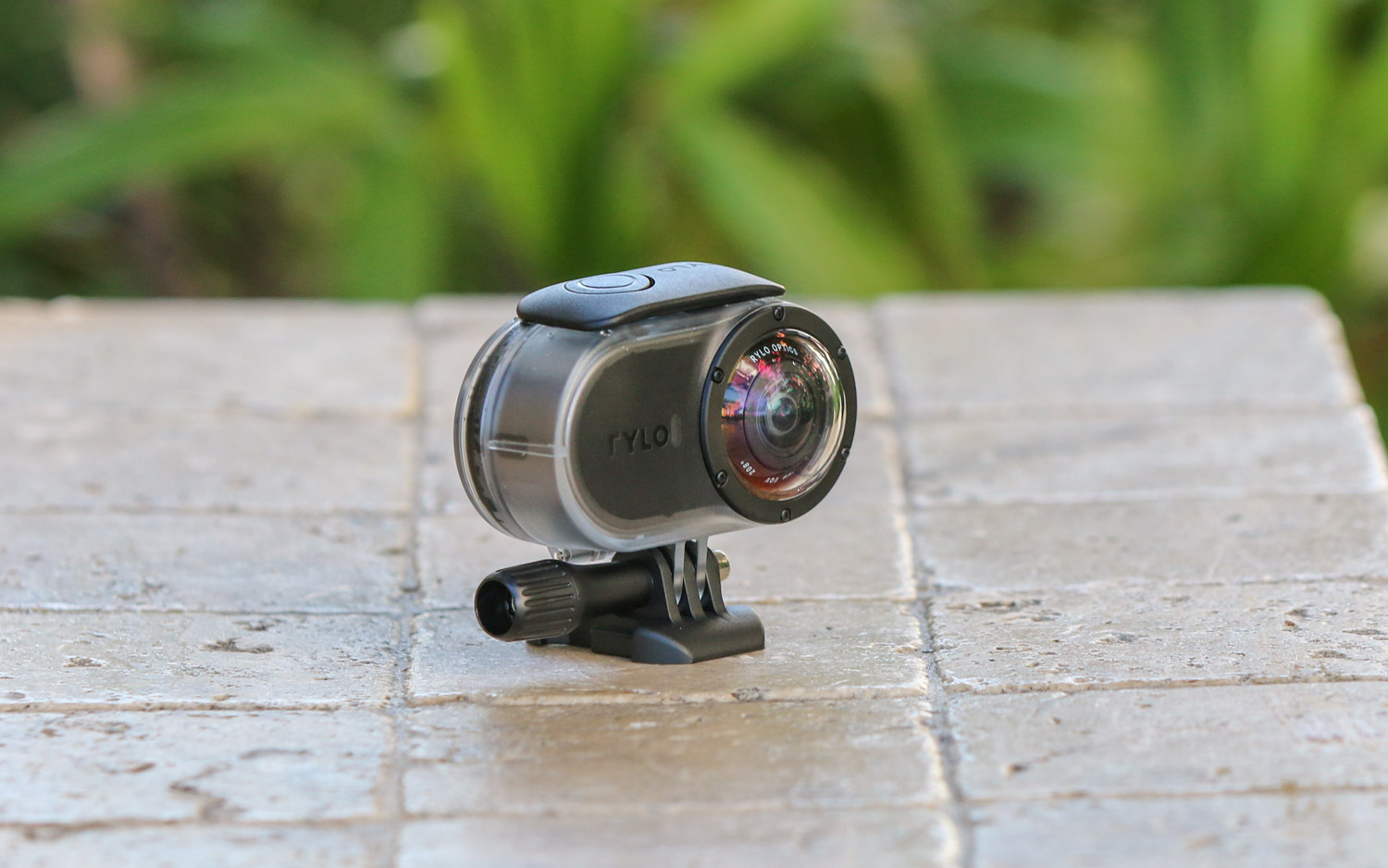
I got a chance to try the Adventure Case while wakeboarding. It was fairly easy to use, but my only wish was for an extra hole or ring that could be used as a secondary point of contact for a safety cable so the Rylo doesn't end up at the bottom of the lake.
Besides the case and cables, the Rylo camera comes with a 16GB microSD card, since there is no onboard storage. However the review sample that was sent to us by the company had a 64GB card, which is a good indication that you should plan on upgrading your storage card as well or plan on offloading footage quite often.
MORE: Best 360-Degree Cameras
Ease of Use
Using the Rylo 360-degree camera was fairly straightforward, thanks to the camera's simple design. The Rylo has three simple mode choices: 360-video, 180-video or Panorama (also 360-degree field of view). The dual lenses have a maximum F/2.8 aperture, a 7mm equivalent, and each cover a viewing angle of 208 degrees.

Once paired with the well-designed app, the Rylo 360 offers users an easy, hassle-free experience. Your Android or iOS device can connect wirelessly to the camera through the app and offers a few user-selectable options and status messages, including battery remaining, storage remaining and firmware version. I could remotely control the camera as well, changing the mode and take a picture or start recording video. There are a few other handy features such as a photo timer, which made it ideal for me to set the camera on a tripod and capture footage without my dopey facial expression front and center.
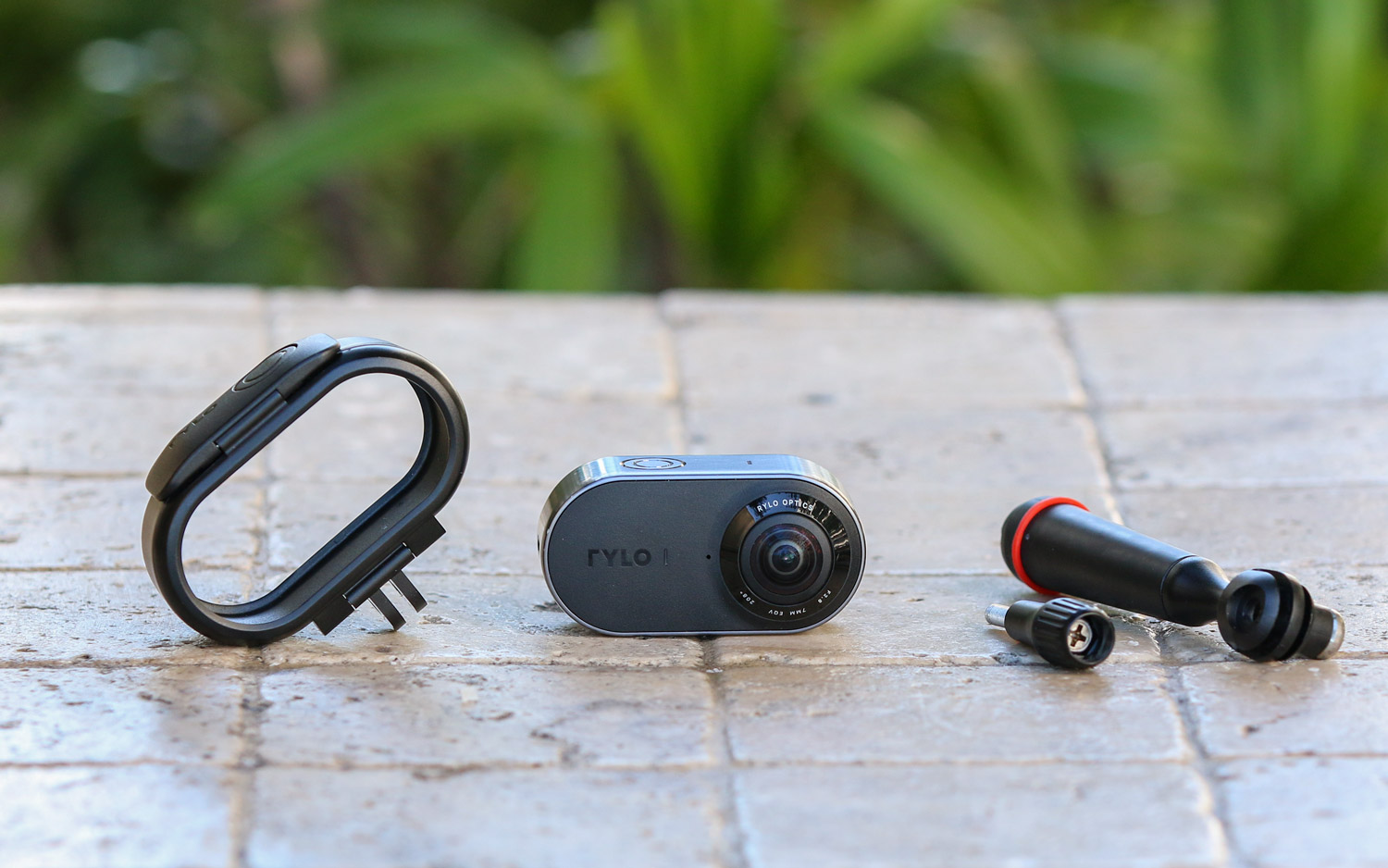
The Rylo comes in two "flavors" – Android and iOS, which only seems to determine which cable is included in the box – either a micro USB-to-micro USB, or a micro USB-to-USB-C for newer Android phones. For the iOS version like the one I tested, there is a micro USB-to-Lightning cable about 18-inches long.
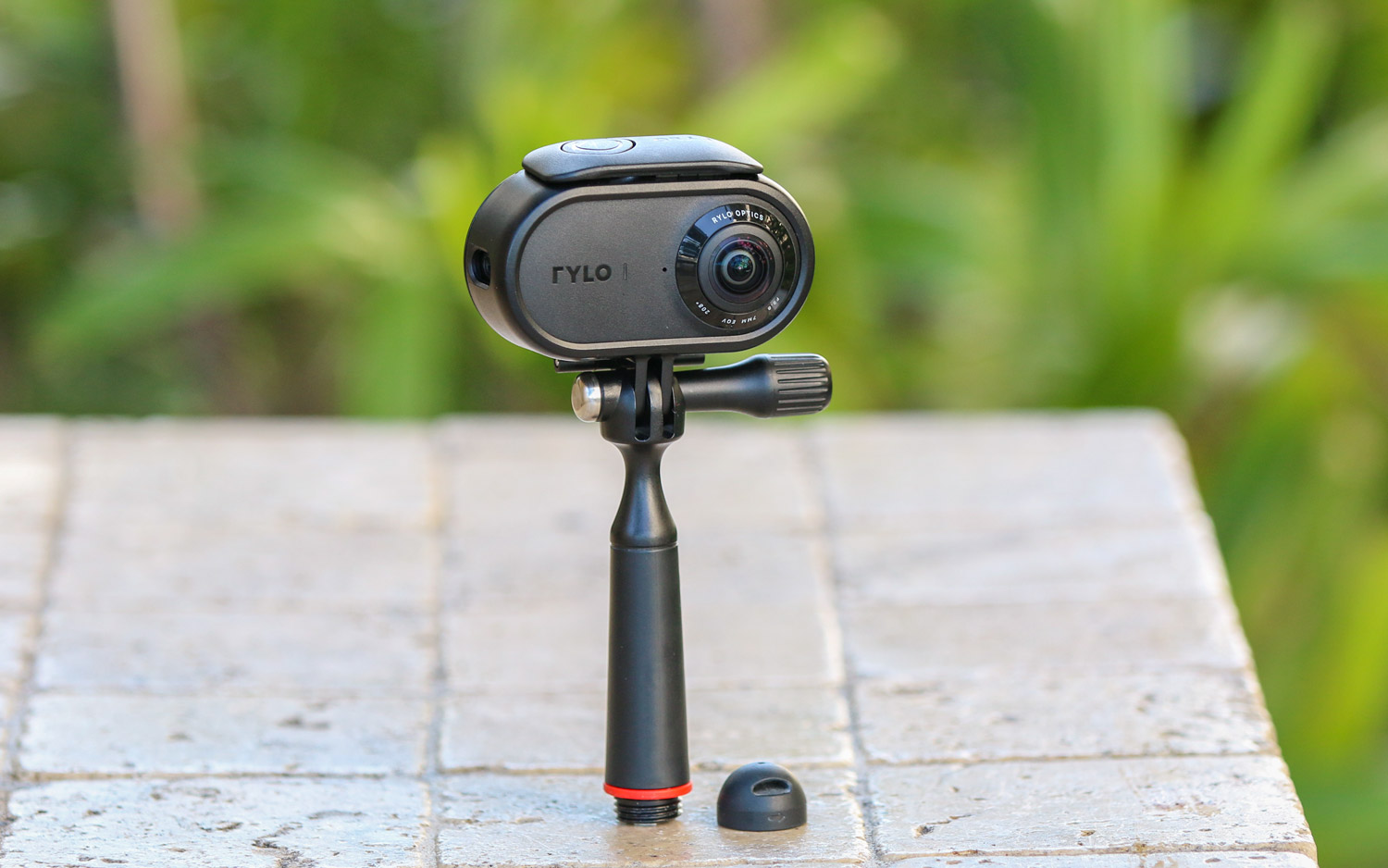
Once I plugged the camera in for the first time to my iPhone, I simply followed the on-screen instructions in the app to sync footage on the camera to the phone. If you wanted to change phones, you can order a replacement cable in a different configuration on the company's website
Using the Rylo 360-degree camera was fairly straightforward, thanks to the camera's simple design of only two buttons and three mode choices
When taking a photo or video, the camera vibrates and produces a brief, audible tone that I liked. However if this annoys you, both functions can be disabled within the app.
MORE: 360 Camera Buying Guide
Additionally, you can't upload content directly from the camera to social media sites like the Holo360 can, but once you connect the camera to the phone, you can transfer the pictures or video to your device and then share them directly from the app.
Video Quality
The Rylo camera seems to be a good alternative for those that want to step up their action camera footage from something like a GoPro.
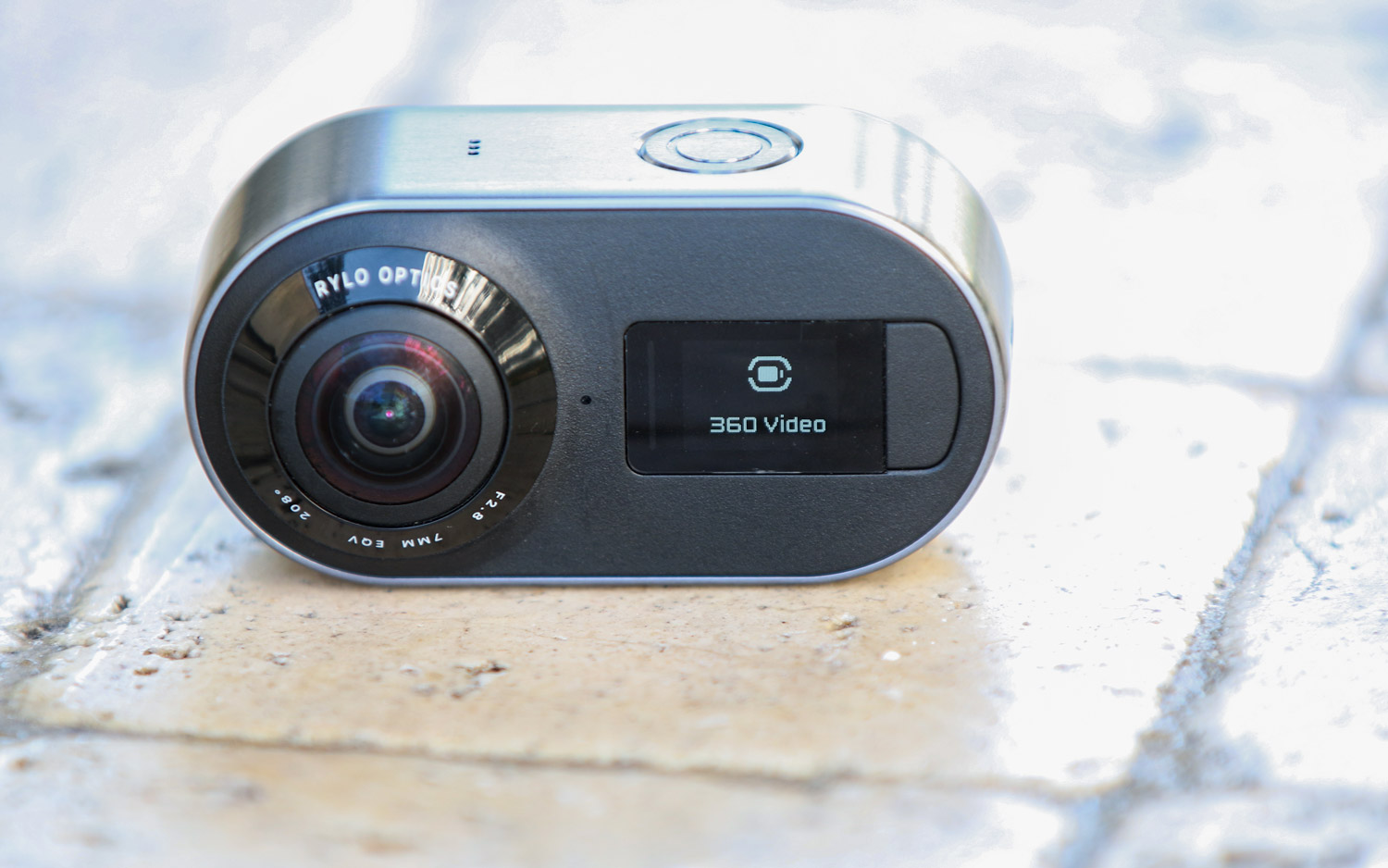
Video is shot in 4K while still panorama photos are shot in 6K. Due to the overlapping field of view, Rylo offers incredibly functional image stabilization, even when you're doing something as shaky as mountain biking.
Once you transfer video from the camera to your phone within the app, the true power of Rylo is almost immediately recognizable. Following the on-screen instructions, the app shows you how to select a person or an item to follow in the footage or, alternatively, how to look at a different item within the 360-degree video.
While it may take you one or two times to get it right as you are playing back the video, the ability to change your viewing angles is quite easy and turns boring footage into a multi-angle adventure.
Walking around Grand Central Station in New York City, the video feels immersive. Even watching it afterwards, you feel like you are there.
Additionally, within the playback screen, there is an icon that allowed me to toggle whether image stabilization was turned on or off. While it isn't perfect, even someone with fairly steady hands would appreciate how much better enabling this makes footage look.
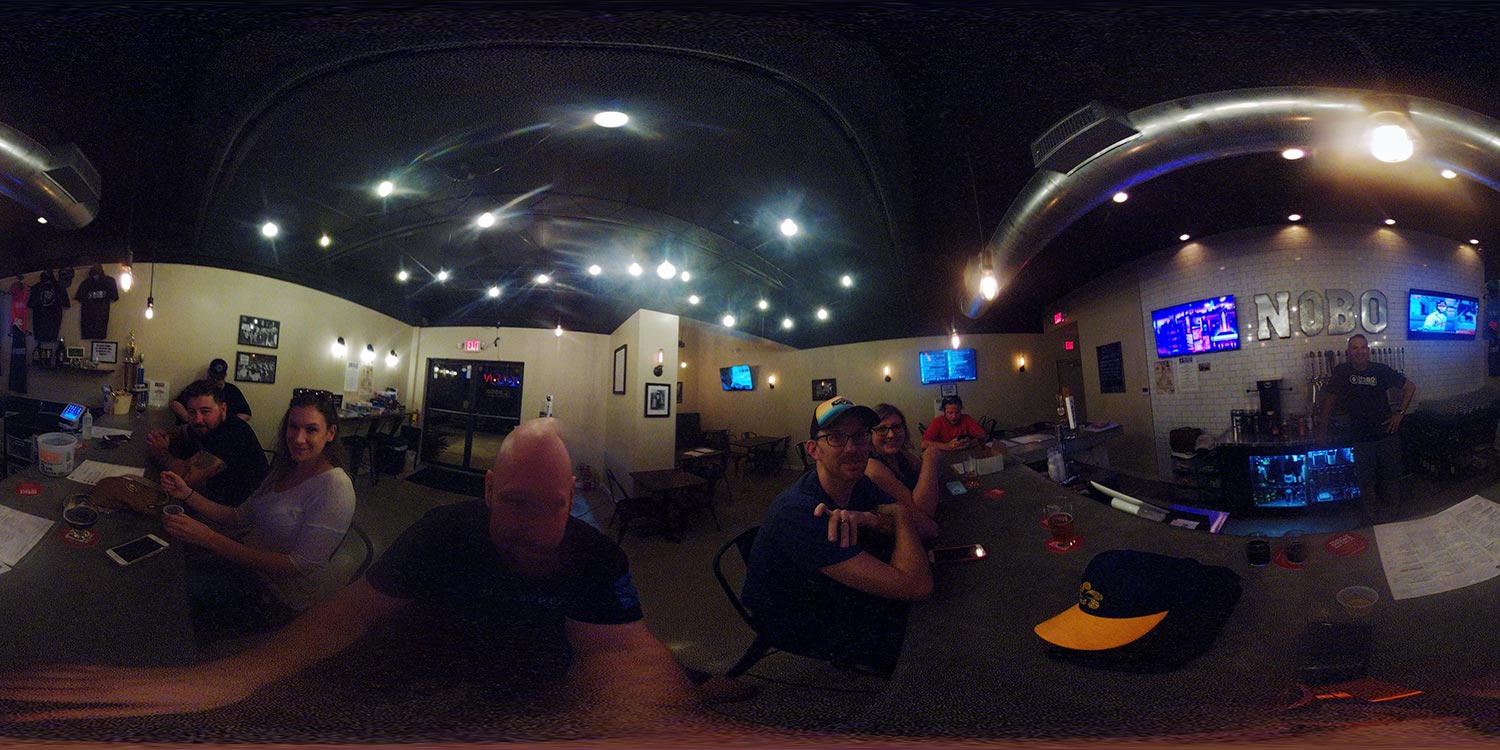
While video quality is certainly good, one of my only gripes with the Rylo 360 is image and video quality when shooting conditions aren’t bright. When taken in a well-lit environment, images look great and there is plenty of detail. However, when conditions are less than ideal — including inside a restaurant with unequal lighting — quality becomes somewhat unusable at a point with pixelated photos and videos. I do find this a little surprising given the 2.8-maximum aperture of both lenses of the Rylo 360.
Besides standard video, you can choose to export footage in the Little Planet format. I personally find this a format gets a bit novel after the second or third time but it does offer a unique perspective for a Facebook profile photo.
I think the image and video quality was better in the Rylo than the Holo360. Having such a nice image- stabilization feature built in also helped, though it's certainly not perfect. If the camera gets jolted too hard, you may notice a blur in the footage for a moment
Audio Quality
The Rylo has a microphone on both faces of the camera, offering decent audio quality. When talking to the camera, even in a loud environment such as Grand Central Terminal in N.Y., my commentary was clear and distinguishable from the other noise outside. While walking around, I had attached the Everyday Case to a selfie stick that I held above my head. Discerning my commentary in the video throughout different parts of the building was easily intelligible, no matter the angle.
Unlike the Holo360, there is not a speaker on the Rylo 360 camera since you need your mobile device to download and play clips recorded on the Rylo. Additionally unlike the Holo360, there is no way to add an external microphone using a 3.5mm jack.
Bottom Line
Of the three 360 cameras I've tried, including the Acer Holo360 and Insta360 One, the Rylo seems to be the most functional and easiest to use, especially for anyone looking to upgrade from an action camera such as a GoPro.
The Holo360 was certainly built to be an all-in-one solution, but its relatively slow processing, potentially fragile form-factor and inability to be mounted to other devices without the plastic case significantly lowers its image quality and makes the both the Rylo or Insta360 better choices.
I liked how easy and straightforward the Rylo app made it to edit footage on a mobile device, offering users the ability to choose where to look in the clip or who or what to follow. The image stabilization really did help smooth out any bumps or jarring found in footage as I walked around GCT in NYC.
The two biggest issues with the Rylo 360 are its price and low-light performance. Although I think it is mostly justified with its targeted usage, the camera is still pricey. Additionally, I would have liked the performance at night or in dimly lit rooms to be better, as footage got a bit grainy when shooting in these lighting conditions.
As an alternative, try the $300 Insta360 One, which our editors gave a stamp of approval earlier this year.
With the included Everyday Case, Rylo offers a strong platform with multiple connectivity options, an intuitive app and a unique tracking feature, making this camera a good choice if trying to elevate standard footage to a 360-degree point of view.
Credit: Tom's Guide
Adam Weissman is a freelance writer and an outdoor aficionado who has reviewed a number of action cameras and accessories for Tom's Guide. In addition to several GoPro cameras, he has also tested budget action cameras and 360 cameras from a variety of manufacturers, and has tested them in a variety of conditions.
